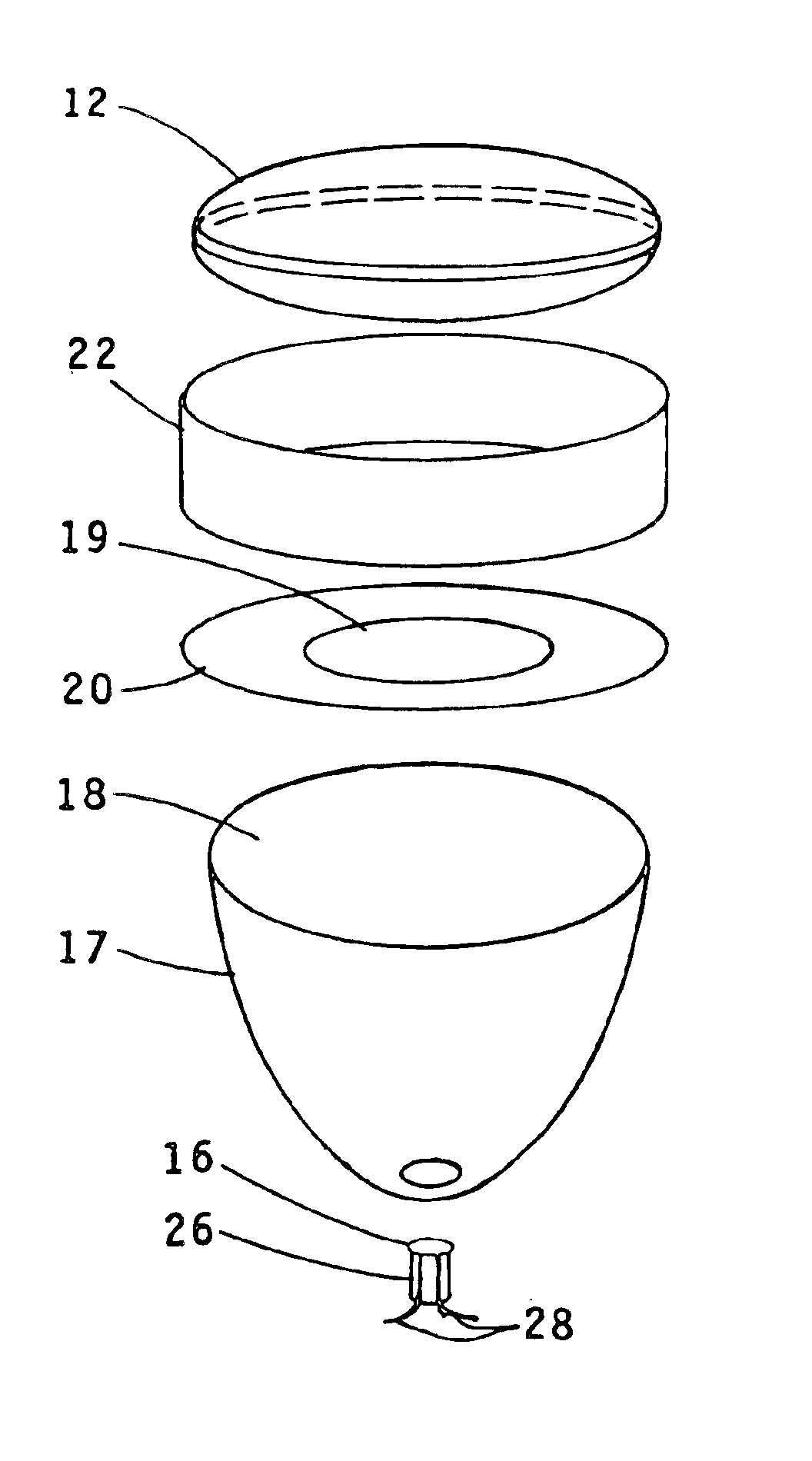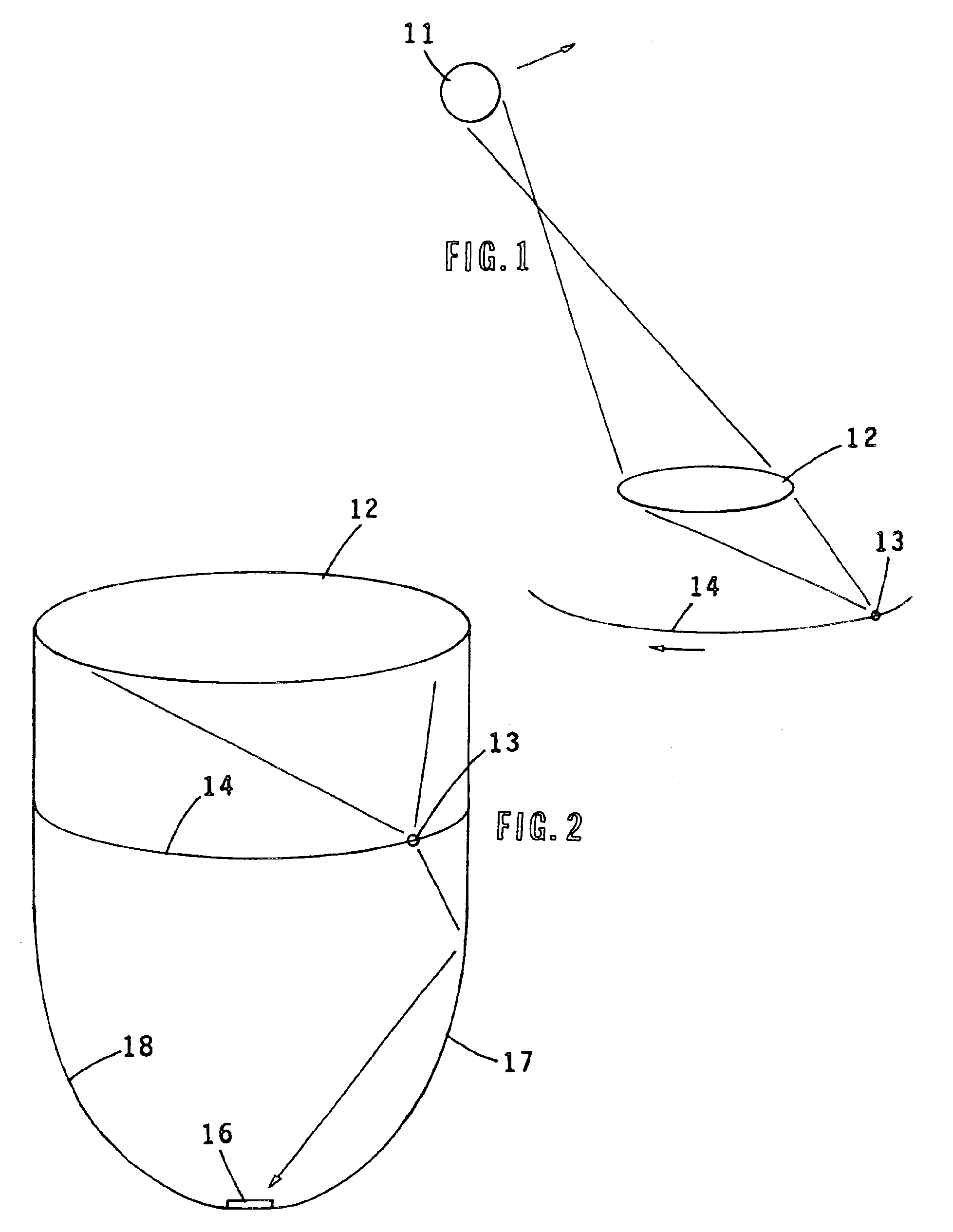Solar energy collection system
a solar energy and collection system technology, applied in the direction of heat generation devices, semiconductor devices, electrical equipment, etc., can solve the problems of increasing complexity and cost, decreasing reliability, etc., and achieve the effect of less complex and less expensiv
- Summary
- Abstract
- Description
- Claims
- Application Information
AI Technical Summary
Benefits of technology
Problems solved by technology
Method used
Image
Examples
Embodiment Construction
[0015]Referring to FIG. 1, a schematic drawing illustrating the operation of the system of the invention is shown. The rays of the sun 11 strike lens 12, which is a standard magnifying lens and are focused onto a spot 13 which is within a compartment or trap. The lens is fixed at a tilt angle which is in accordance with the latitude of the site. The daily arc of the sun across the face of the lens produces a smooth arc path 14 in three dimensional space. At or near this arc path is either a secondary mirrored surface or an opening to guide the light into the solar trap.
[0016]Referring now to FIGS. 2, 2A and 2B, a preferred embodiment of the invention is illustrated schematically. The solar light rays are focused by lens 12 onto spot 13 located within light trap or compartment 17. The insides walls of the light trap are mirrored so that the rays are reflected onto solar cell 16 which generates electrical energy. As previously pointed out, the focused spot moves along the ar path 14 o...
PUM
 Login to View More
Login to View More Abstract
Description
Claims
Application Information
 Login to View More
Login to View More - R&D
- Intellectual Property
- Life Sciences
- Materials
- Tech Scout
- Unparalleled Data Quality
- Higher Quality Content
- 60% Fewer Hallucinations
Browse by: Latest US Patents, China's latest patents, Technical Efficacy Thesaurus, Application Domain, Technology Topic, Popular Technical Reports.
© 2025 PatSnap. All rights reserved.Legal|Privacy policy|Modern Slavery Act Transparency Statement|Sitemap|About US| Contact US: help@patsnap.com



